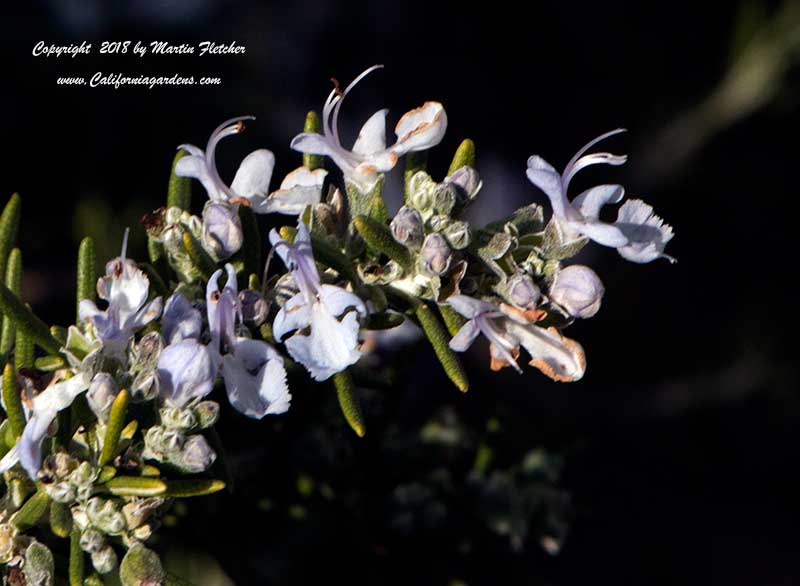Rosmarinus officinalis prostratus - Creeping Rosemary
Rosmarinus officinalis prostratus is a low shrub with blue flowers and short needle like leaves. Creeping Rosemary blooms much of they year with the blue flowers peaking in the Spring. Creeping Rosemary attracts bees, so planting it near an active area or pool is not recommended. Rosmarinus officinalis prostratus grows up to 3 feet tall and if you give it enough time even more. Rosmarinus officinalis prostratus roots as it grows and can cover 10 feet or more in width. If you want your plants to spread this far you should provide water from above. Rosemary is edible, the upright varieties are more pungent and often preferred. Recipes for cooking with Rosemary. Rosmarinus officinalis prostratus is the most enthusiastic trailing variety. Rosmarinus officinalis prostratus can be used in containers, for low hedges or sheared to cascade over walls. Rosmarinus officinalis prostratus does best in full sun but will tolerate some shade. What rosemary will not tolerate is a soggy part of the garden. Rosmarinus officinalis prostratus is drought tolerant to a point, some Summer water is usually required. If plants are on a drip system it is important to note that they root as they grow and the new roots are often beyond the reach of the drippers. Rosmarinus officinalis prostratus will contract if supplimental water is not provided. Rosmarinus officinalis prostratus is susceptable to fire particularly as it ages. Rosmarinus officinalis prostratus will develop a thatch zone if it is not trimmed from above. Rosmarinus officinalis prostratus is a major bee attractor and is usually a poor choice near a pool. In spite of its various challenges Rosmarinus officinalis prostratus can be found in a majority of Southern California's gardens and if used well Rosemary can be spectacular. If the deer are eating your rosemary they probably already ate almost everything else. Rosmarinus officinalis prostratus is Winter hardy into the mid to low 20°s F.

Flowers and foliage of Rosmarinus officinalis prostratus - Creeping Rosemary. High resolution photos are part of our garden image collection.
